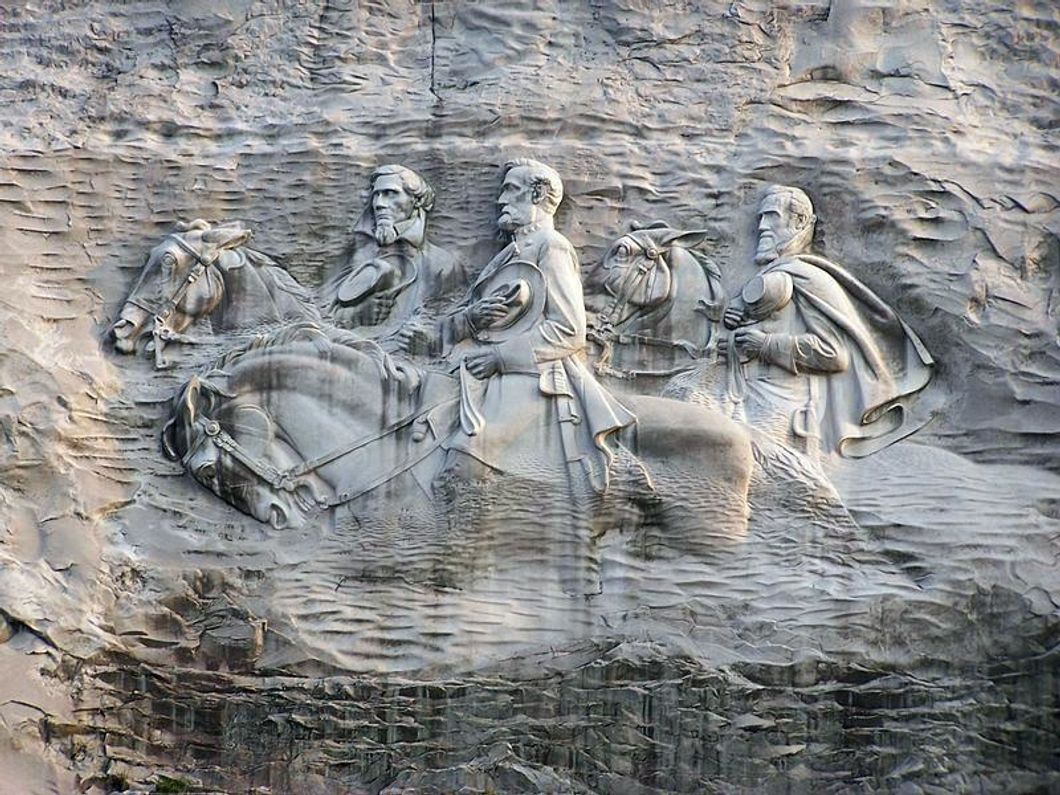Protesters and activists across the nation are calling for the removal of monuments and statues that commemorate confederate war generals and their accomplishments. Many of these monuments have been in plain view for decades, standing against a backdrop of modernization and diversity that they fought against.
Petitions have always circulated calling for their removal, but recently, protesters have been taking matters into their own hands in an attempt to erase the glorification of this part of history.
Georgia played a significant role in the Civil War, and it is not difficult to discern that the state was on the wrong side of history. However, Confederate flags are plastered on every other car in certain parts of Georgia, and people take pride in the state that they believed was fighting for the American way of life. One of the most apparent symbols for this confederate respect is the 90 by 190-foot carving of Robert E. Lee, Thomas "Stonewall" Jackson, and Jefferson Davis on the side of Stone Mountain, the largest mass of granite in the world and a cherished attraction for Georgians and tourists alike.
I generally have fond memories of going to Stone Mountain growing up. We would ride the cable car up to the top of the rock, take pictures, and pay 50 cents to try to find our house from the binoculars. One of my favorite parts of these trips was the nightly laser show. Families would sprawl across the giant field facing the carved side of the mountain, and we would look on as lights and music retold the history of Robert E. Lee and his confederates with dazzling animations and special effects.
Luckily this show was done in the dark, where a young girl wouldn't be able to notice that she was one of the only brown faces there.
It wasn't until I was much older that I learned about the tension the Stone Mountain park monument caused. The park is less than 30 minutes from the heart of Atlanta, a city with a majority-Black population. Local high schools would hold proms and special events at the park, at the feet of those carefully etched horses carrying the symbols of white supremacy, while the KKK held meetings and rallies at the other side.
The story behind the creation of the monument provides more details about its racist origins. The second KKK was founded at Stone Mountain in 1915, and funding for the carving of the monument was ignited by white supremacists' desire to fight against the changes brought about by the 1950s' Civil Rights Movement. Today, proponents of its preservation cite its importance as a reminder of the New South and regional pride, conveniently ignoring the intentions of the sculptors.
The protests against police brutality in the past few weeks have been a new major chapter in American race relations. Institutions and aspects of daily life that were inherently racist are finally being called out rather than being brushed under the rug. One of the many changes that need to be made is the removal of monuments for racist leaders of our past. It's time to see the Stone Mountain monument for what it is and leave it where it belongs — history.













